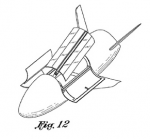Mature galaxy cluster found in young universe
A mature galaxy cluster has been found by astronomers at a time when the universe is thought to be only a quarter of its present age.
This discovery could be very significant, since astronomers think mature galaxy clusters need time to form, and shouldn’t exist in the early universe. “If further observations find many more [of these clusters] then this may mean that our understanding of the early Universe needs to be revised.”
A mature galaxy cluster has been found by astronomers at a time when the universe is thought to be only a quarter of its present age.
This discovery could be very significant, since astronomers think mature galaxy clusters need time to form, and shouldn’t exist in the early universe. “If further observations find many more [of these clusters] then this may mean that our understanding of the early Universe needs to be revised.”




